
Vol. XVII, No. 6, September-October 2017
- Editor's corner
- Doc Brundy's sodacade under construction
- The rise of gender-neutral marketing pronouns
- Dining out is now the main event
- Trade names announced for our South Puget Sound project
- The cannibals are coming
- Low-tech entertainment
- The all-new Davis Mega Farm Festival
- The lure of LTOs
- Don't believe go-kart misinformation. Know you source. Part 2
- Earache
- October is National Pizza Month
Dining out is now the main event
The shift has been happening over time, but now it has reached critical mass - dining out has become the main event for a night out. The way we're eating as a culture has changed. Instead of serving just a meal, restaurants have evolved to become experience and social destinations in their own right. In fact, restaurants are now more popular as out-of-home destinations than entertainment venues of all types, including all types of FECs.
YPulse, a consultancy that specializes in millennial culture, recently examined the importance of restaurants to Millennials. Here are the results in a number of graphs.
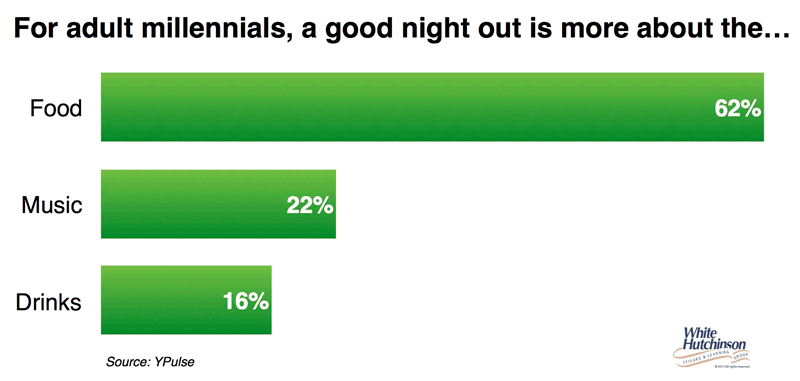
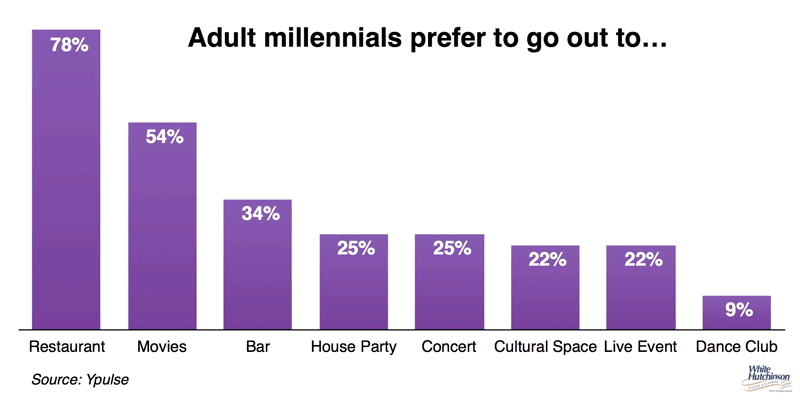
Millennials prefer going to restaurants over the movies, music venues, bars, concerts and every other type of out-of-home leisure venue. Millennials now consider restaurants as entertainment.
And although they prefer restaurants to bars, they visit bars more often than any other generation.
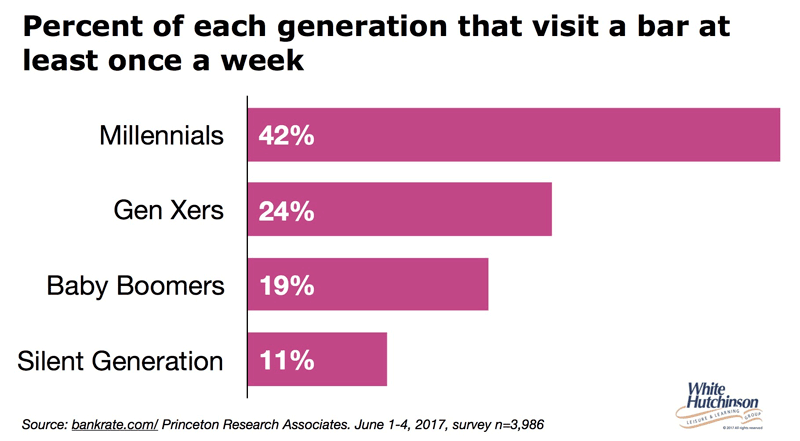
And with the exception of Millennials earning less than $30,000 a year, restaurants significantly trump traditional entertainment as the way to spend their discretionary income.
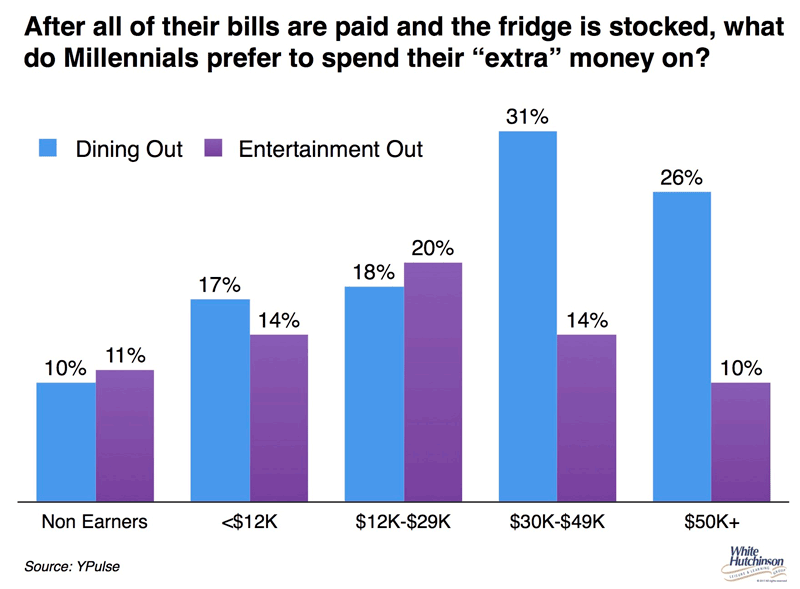
Millennials love restaurants so much they spend more money eating out dining out than non-Millennials according to research by Restaurant Marketing Labs. A survey of 4,000 Millennials by The Boston Consulting Group (BCG) found that Millennials eat out more often than non-Millennials regardless of their income or household composition.
BCG also found that Millennials ranked spending their money on restaurant meals and drinks above consumer electronics, apparel, footwear, beauty cosmetic products, and accessories. In fact, 87% will splurge on a nice meal even when money is tight according to Restaurant Marketing Labs.
And food isn't just food for the millennial-minded; it's an experience and often a communal one as well. BCG's survey found that a higher percentage of Millennials reported eating out with friends and coworkers more often than non-Millennials (65% vs. 43%).
Food has become an experience and more often a communal one as well. In fact, dining out or meeting friends for a bit or drinks has become an affordable indulgence, an accessible luxury. For example, an organic burger made with grass-fed beef or some custom crafted cocktail is considered a luxury most people can afford.
There are any number of reasons for this trend. Of course one reason is the foodie trend, where dining out has become all about adventure and discovery. Technomic finds that 40% of Millennials and 38% of Gen Xers prefer to visit restaurants that offer dishes with new and innovative flavors. Just as important is the communal nature of dining. The more we spend time on social media, the more we are seeking high quality face-to-face social time. Nothing ramps up the social as much as sitting around together sharing food and drink and good conversation. Then of course, there's the social opportunity for a sharable Instagramable experience.
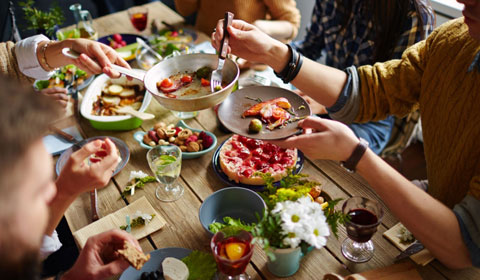
This has changed the way we eat and the food we order. The days of salad-entree-dessert are behind us. Chefs are now creating menus that reflect today's social nature of dining with shared plates, ordered in rounds, accompanied by drinks.
A community leisure venue (CLV) that is known as a food and drink destination, whether it's a restaurant or a eatertainment concept that adds in some entertainment to the food and drink, has two clear advantages over the old model FECs that considered themselves to be entertainment destinations. Restaurants have a much broader age appeal than typical FEC entertainment, so it broadens the market. Secondly, people eat out far more than they visit entertainment venues. The average American eats out in the neighborhood of 200 times a year, yet they only go to the most popular form of out-of-home entertainment, the movie theater, 3.7 times a year. So destination food and drink can drive repeat visits.
Implications for CLVs
As we wrote in the article Chasing the next BIG Thing back in 2015, the formula for success today with community leisure venues of all type is being a food and drink destination. Yes, mixing in some interactive social entertainment is a plus, but it's the food and drink that will drive the vast majority of visits and spending, not the entertainment.
Vol. XVII, No. 6, September-October 2017
- Editor's corner
- Doc Brundy's sodacade under construction
- The rise of gender-neutral marketing pronouns
- Dining out is now the main event
- Trade names announced for our South Puget Sound project
- The cannibals are coming
- Low-tech entertainment
- The all-new Davis Mega Farm Festival
- The lure of LTOs
- Don't believe go-kart misinformation. Know you source. Part 2
- Earache
- October is National Pizza Month



